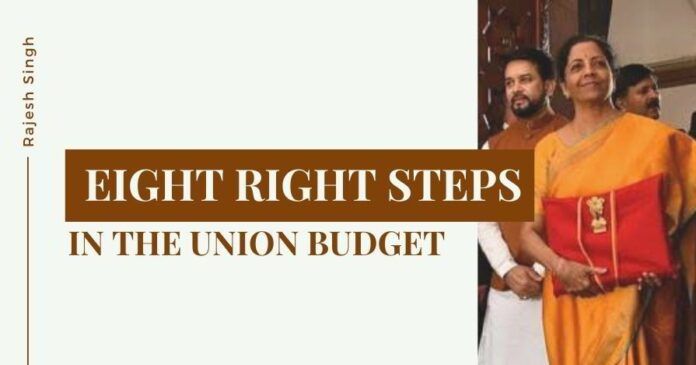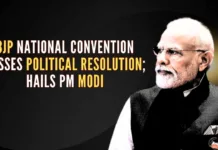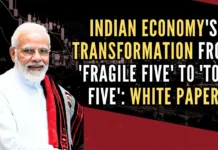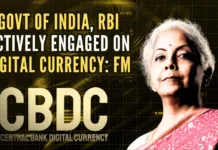
These are some of the most prominent areas, away from the narrative of whether the Budget addresses the demand problem; whether it tackles the menace of unemployment; whether it can keep the fiscal deficit within limits…
At the end of the day the Union Budget 2020-21 was announced on February 1, investors in the stock market lost Rs 3.5 lakh crore. Very possibly, they will recover those losses in time to come. Will the country’s economy recover as a consequence of the measures Union Minister for Finance Nirmala Sitharaman announced in her nearly three-hour-long speech? Depending on which political side one is, the responses vary from optimism to dismissal of such hope. The jury is still out and we will know for certain in the coming months. But the Finance Minister did make some positive gestures which, while not necessarily directly impacting either growth or employment — the two major current concerns — are pathbreaking in themselves.
The most futuristic of the proposals unveiled by the Union Finance Minister is the commitment of Rs 8,000 crore over the next five years for quantum computing research.
The first is the decision to incorporate a tax-payers’ charter in the Income Tax Act. This a step forward from a mere declaration that genuine tax-payers would not be harassed. The interests of the assessees would be protected through the entry of this document in the statute books, and any violation of that would attract accountability from the tax authorities. According to reports, India would be only the fourth country in the world to include a tax-payers’ charter in the law books.
The second is the announcement that criminal liability provisions in the Income Tax Act, which are essentially civil in nature, would be abolished. This is expected to contain what is being called ‘tax terrorism’ by people, both in the corporate world and at the individual level. Besides, it will enhance tax collection and send across the message that the government does not view tax-payers with suspicion.
A third announcement, which is related to the above, is the Vivad se Vishwas scheme. This has been wrongly understood as a sort of amnesty. In reality, it provides a window of opportunity to litigants in tax matters to settle their pending disputes, without having to pay interest or penalty, if they do so before March 31 of this year by paying the principal amount. Those who exceed that time limit and still wish to settle the dispute with the tax authorities can do so by paying a small amount in addition to the principal sum. There are more than 483,000 tax disputes pending in various tribunals, and many of them can be resolved if the assess avails of this golden opportunity. The scheme is open until June 30 this year.
The fourth important step taken by the Finance Minister is to increase the allocation for nutrition programmes by over eight per cent, by giving Rs 3,700 crore to the Integrated Child Development Scheme (ICDS). Overall, there will be Rs 35,000 crore for various nutrition-related programmes. The Ministry of Health and Family Welfare, Women & Child Development and the Human Resource Development Ministry will draw from this fund for the many programmes they operate in this area. Malnutrition has been a major issue and, while various steps have been taken to tackle it, the problem remains serious, with non-governmental agencies and even the government admitting that a lot more needs to be done in this direction.
The fifth interesting announcement is that of Kisan Rail, which will be operated through a public-private partnership. Under this programme, Indian Railways will run refrigerated coaches to transport perishable products. This will include milk, meat and fish. While befitting the farmers, Kisan Rail will also help in generating revenue for the railways. It needs to be remembered that Indian Railways is in some sort of a crisis, with its operating ratio as high as 94 per cent. In simple terms, for every Rs 100, it earns, Indian Railways spends Rs 94 on expenses, thus leaving just four rupees for other activities. This measure might help Indian Railways avoid the impending revenue deficit it stares at.
The sixth could reform the country’s higher education sector if implemented properly. The Finance Minister said the country’s ‘top ten’ higher educational institutions will be allowed to offer online education to reach millions of students who do not have access — for various reasons — to regular undergraduate courses. The University Grants Commission has already approved a pilot project for seven such institutions. The other step taken is to open up higher education to foreign direct investment and external financial borrowings. Not only will this help the institutions become more competitive but it will also enhance the quality of education for students. Critics of the BJP have for long been claiming that the party favours corporatisation of education and that this announcement is a reflection of its mindset. However, education, like other sectors, cannot remain quarantined from global developments.
The seventh important announcement is to dramatically increase the allocation to tackle air pollution. Last year, the amount set aside was a mere Rs 460 crore, which has gone up to Rs 4,400 crore for the financial year 2020-21. This will benefit cities with a million-plus population. The government would announce parameters for incentives that will be provided to the cities which show visible results in containing air pollution. Environmental experts have welcomed the enhanced funds but are keeping their fingers crossed over the implementation. That said, the details of allocation for the various programmes under the Ministry of Environment remain unclear as of now.
But perhaps the most futuristic of the proposals unveiled by the Union Finance Minister is the commitment of Rs 8,000 crore over the next five years for quantum computing research. Sitharaman believes that new technologies like artificial intelligence, Internet-of-Things and data analytics, need to be promoted and utilised in various government initiatives to ensure faster delivery. The government proposes to soon announce a policy to encourage private domestic digital firms to invest in new technologies. Quantum computing is the new frontier of science and India has so far not really latched on to it. With the right implementation, it will give a major thrust to quantum communication, cyber-security and cryptography — all of which are critical in today’s time when threats to nations are increasingly emerging from the virtual world as well. The push, in quantum computing could also result in local talent in the information technology getting an opportunity to make their mark in this fast-emerging area.
These are some of the most prominent areas, away from the narrative of whether the Budget addresses the demand problem; whether it tackles the menace of unemployment; whether it can keep the fiscal deficit within limits even while seeking to increase government spending to spur growth; and, whether the sops given to industry will propel the private sector to shrug off its reluctance and begin investing in considerable ways.
Note:
1. The views expressed here are those of the author and do not necessarily represent or reflect the views of PGurus.











Are all these points as per sanatan dharma? Funny how they never talk about sanatan dharma when they discuss economics.
Rajesh Singh Ji
All said and done about allocations to this or that scheme or proposals to use technologies where is the talent in the ministry,except few?
Vivad se Vishwas scheme/Disinvestment is message to Dr.S.Swamy to shut up and retire and not hunt for corrupt crooks.
BJP lead ministry would be happy to work with corrupt Cong-I and Commies mindset bureaucracy.